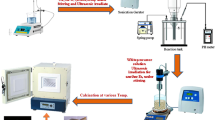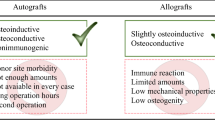Abstract
In this study, porous scaffolds were produced by a thermal crosslinking of polycaprolactone diacrylate in the presence of hydroxyapatite (HA) and particulate leaching technique with sodium chloride as the water soluble porogen for bone tissue engineering applications. The prepared scaffolds were characterized using techniques such as Field Emission Scanning Electron Microscopy, Differential Scanning Calorimetry, and Attenuated Total Reflectance-Fourier Transform Infrared Spectroscopy. Moreover, dynamic mechanical properties were investigated using Dynamic Mechanical Thermal Analysis. The obtained scaffolds present a porous structure with interconnected pores and porosity around 73%. It was found that the incorporation of HA particles to polycaprolactone (PCL) matrix resulted in an increased crystallinity. Moreover, both the storage modulus (E’) and glass transition temperature (Tg) increased, while the loss factor (tan δ) decreased due to the hindrance of the HA particles to the mobility of polymer segments. Cytocompatability of the scaffolds was assessed by MTT assay and cell attachment studies. Osteoconductivity of the scaffolds was investigated with cells alkaline phosphatase extraction. The levels of alkaline phosphatase activity were found to be higher for PCL/HA network scaffold than for PCL network scaffold. In addition, cytocompatibility of the PCL/HA network scaffold indicated no toxicity, and cells were attached and spread to the scaffold walls.
Similar content being viewed by others
References
Soheilmoghaddam M, SharifzadehGh, HeidarPour R, Wahit MU, Whye WT, Lee XY. Regenerated cellulose/ß-cyclodextrin scaffold prepared using ionic liquid. Mater Lett 2014;135:210–213.
Lee SH, Lee JH, Cho YS. Analysis of degradation rate for dimensionless surface area of well-interconnected PCL scaffold via in-vitro accelerated degradation experiment. Tissue Eng Regen Med 2014;11:446–452.
Lee SH, Chung HY, Shin HI, Park DJ, Choi JH. Osteogenic activity of chitosan-based hybrid scaffold prepared by polyelectrolyte complex formation with alginate. Tissue Eng Regen Med 2014;11:106–112.
García Cruz DM, Coutinho DF, Mano JF, Gómez Ribelles JL, Salmerón Sánchez M. Physical interactions in macroporous scaffolds based on poly(e-caprolactone)/chitosan semi-interpenetrating polymer networks. Polymer 2009;50:2058–2064.
Rezaei A, Mohammadi MR. Development of hydroxyapatite nanorods-polycaprolactone composites and scaffolds derived from a novel in-situ sol-gel process. Tissue Eng Regen Med 2012;9:295–303.
Park SA, Lee SH, Kim WD. Fabrication of porous polycaprolactone/hydroxyapatite (PCL/HA) blend scaffolds using a 3D plotting system for bone tissue engineering. Bioprocess Biosyst Eng 2011;34:505–513.
Farokhi M, Sharifi S, Shafieyan Y, Bagher Z, Mottaghitalab F, Hatampoor A, et al. Porous crosslinked poly(e-caprolactone fumarate)/nanohydroxyapatite composites for bone tissue engineering. J Biomed Mater Res A 2012;100:1051–1060.
Cai L, Wang S. Poly(e-caprolactone) acrylates synthesized using a facile method for fabricating networks to achieve controllable physicochemical properties and tunable cell responses. Polymer 2010;51:164–177.
Zhang Y, Zhang Y, Chen M, Yan J, Ye Z, Zhou Y, et al. Surface properties of amino-functionalized poly(e-caprolactone) membranes and the improvement of human mesenchymal stem cell behavior. J Colloid Interface Sci 2012;368:64–69.
Chen M, Le DQ, Baatrup A, Nygaard JV, Hein S, Bjerre L, et al. Self-assembled composite matrix in a hierarchical 3-D scaffold for bone tissue engineering. Acta Biomater 2011;7:2244–2255.
Kweon H, Yoo MK, Park IK, Kim TH, Lee HC, Lee HS, et al. A novel degradable polycaprolactone networks for tissue engineering. Biomaterials 2003;24:801–808.
Wang Y, Liu L, Guo S. Characterization of biodegradable and cytocompatible nano-hydroxyapatite/polycaprolactone porous scaffolds in degradation in vitro. Polym Degrad Stabil 2010;95:207–213.
Chuenjitkuntaworn B, Inrung W, Damrongsri D, Mekaapiruk K, Supaphol P, Pavasant P. Polycaprolactone/hydroxyapatite composite scaffolds: preparation, characterization, and in vitro and in vivo biological responses of human primary bone cells. J Biomed Mater Res A 2010;94:241–251.
Cai L, Guinn AS, Wang S. Exposed hydroxyapatite particles on the surface of photo-crosslinked nanocomposites for promoting MC3T3 cell proliferation and differentiation. Acta Biomater 2011;7:2185–2199.
Jiang CP, Chen YY, Hsieh MF. Biofabrication and in vitro study of hydroxyapatite/mPEG-PCL-mPEG scaffolds for bone tissue engineering using air pressure-aided deposition technology. Mater Sci Eng C Mater Biol Appl 2013;33:680–690.
Park JS, Woo DG, Sun BK, Chung HM, Im SJ, Choi YM, et al. In vitro and in vivo test of PEG/PCL-based hydrogel scaffold for cell delivery application. J Control Release 2007;124:51–59.
Yang J, Shi G, Bei J, Wang S, Cao Y, Shang Q, et al. Fabrication and surface modification of macroporous poly(L-lactic acid) and poly(L-lactic-co-glycolic acid) (70/30) cell scaffolds for human skin fibroblast cell culture. J Biomed Mater Res 2002;62:438–446.
Wu H, Wan Y, Dalai S, Zhang R. Response of rat osteoblasts to polycaprolactone/chitosan blend porous scaffolds. J Biomed Mater Res A 2010; 92:238–245.
Wan Y, Wu H, Cao X, Dalai S. Compressive mechanical properties and biodegradability of porous poly(caprolactone)/chitosan scaffolds. Polym Degrad Stabil 2008;93:1736–1741.
Tahmasbi Rad A, Solati-Hashjin M, Abu Osman NA, Faghihi S. Improved bio-physical performance of hydroxyapatite coatings obtained by electrophoretic deposition at dynamic voltage. Ceram Int 2014;40:12681–12691.
Shor L, Güçeri S, Wen X, Gandhi M, Sun W. Fabrication of three-dimensional polycaprolactone/hydroxyapatite tissue scaffolds and osteoblast-scaffold interactions in vitro. Biomaterials 2007;28:5291–5297.
Ozkan S, Kalyon DM, Yu X, McKelvey CA, Lowinger M. Multifunctional protein-encapsulated polycaprolactone scaffolds: fabrication and in vitro assessment for tissue engineering. Biomaterials 2009;30:4336–4347.
Lee WF, Cheng TS. Studies on preparation and properties of porous biodegradable poly(NIPAAm) hydrogels. J Appl Polym Sci 2008;109:1982–1992.
Rodriguez ED, Luo X, Mather PT. Linear/network poly(e-caprolactone) blends exhibiting shape memory assisted self-healing (SMASH). ACS Appl Mater Interfaces 2011;3:152–161.
Averous L, Moro L, Dole P, Fringant C. Properties of thermoplastic blends: starch-polycaprolactone. Polymer 2000;41:4157–4167.
Li Z, Ramay HR, Hauch KD, Xiao D, Zhang M. Chitosan-alginate hybrid scaffolds for bone tissue engineering. Biomaterials 2005;26:3919–3928.
Wu F, Liu C, Neill B, Wei J, Ngothai Y. Fabrication and properties of porous scaffold of magnesium phosphate/polycaprolactone biocomposite for bone tissue engineering. Appl Surf Sci 2012;258:7589–7595.
Qiao C, Jiang S, Dong D, Ji X, An L, Jiang B. The critical lowest molecular weight for PEG to crystallize in cross-linked networks. Macromol Rapid Commun 2004;25:659–663.
Cai L, Lu J, Sheen V, Wang S. Lubricated biodegradable polymer networks for regulating nerve cell behavior and fabricating nerve conduits with a compositional gradient. Biomacromolecules 2012;13:358–368.
Chen DZ, Tang CY, Chan KC, Tsui CP, Yu PHF, Leung MCP, et al. Dynamic mechanical properties and in vitro bioactivity of PHBHV/HA nanocomposite. Compos Sci Technol 2007;67:1617–1626.
Koupaei N, Karkhaneh A, Daliri Joupari M. Preparation and characterization of (PCL-crosslinked-PEG)/hydroxyapatite as bone tissue engineering scaffolds. J Biomed Mater Res A 2015;103:919–3926.
Nazhat SN, Kellomäki M, Törmälä P, Tanner KE, Bonfield W. Dynamic mechanical characterization of biodegradable composites of hydroxyapatite and polylactides. J Biomed Mater Res 2001;58:335–343.
Shokrollahi P, Mirzadeh H, Scherman OA, Huck WT. Biological and mechanical properties of novel composites based on supramolecular polycaprolactone and functionalized hydroxyapatite. J Biomed Mater Res A 2010;95:209–221.
Misra SK, Ansari T, Mohn D, Valappil SP, Brunner TJ, Stark WJ, et al. Effect of nanoparticulate bioactive glass particles on bioactivity and cytocompatibility of poly(3-hydroxybutyrate) composites. J R Soc Interface 2010;7:453–465.
Fong P, Shin’oka T, Lopez-Soler RI, Breuera C. The use of polymer based scaffolds in tissue-engineered heart valves. Prog Ped Cardio 2006;21:193–199.
Author information
Authors and Affiliations
Corresponding author
Rights and permissions
About this article
Cite this article
Koupaei, N., Karkhaneh, A. Porous crosslinked polycaprolactone hydroxyapatite networks for bone tissue engineering. Tissue Eng Regen Med 13, 251–260 (2016). https://doi.org/10.1007/s13770-016-9061-x
Received:
Revised:
Accepted:
Published:
Issue Date:
DOI: https://doi.org/10.1007/s13770-016-9061-x




